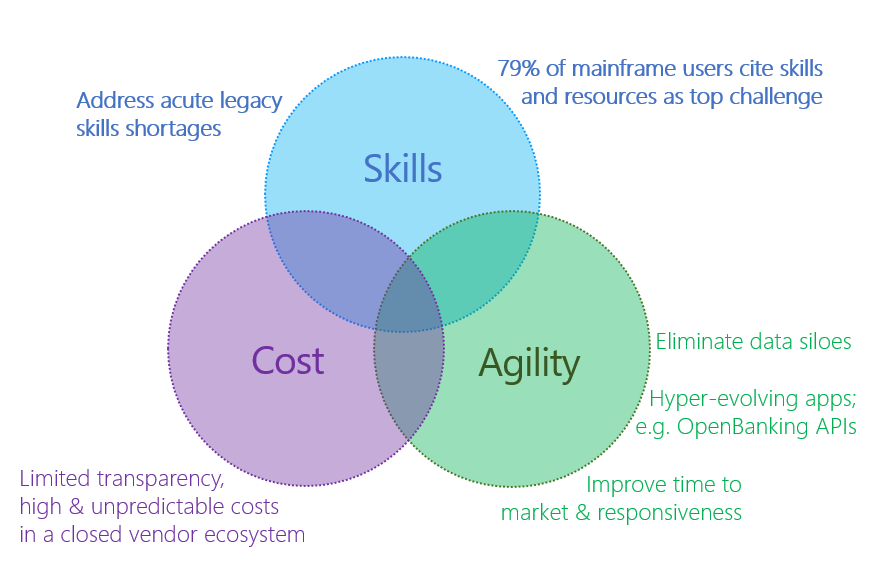As technology evolves, many organizations face the challenge of modernizing their legacy systems to meet the demands of the digital age. Mainframe systems, in particular, are quickly becoming the new "year 2000 problem" or "Y2K bug".
Not a real technical bug, but nowadays a more human bug; the experts who build all these workloads in legacy code have reached a respectful age and deserve to go with retirement.
A good thing and a big compliment for what they have built over the last decades. But what’s next for the companies leaving behind; are there enough people to replace the current developers? Are all these legacy applications well documented so maintenance is not a problem for the future state of these workloads. Most of these primary workloads representing the "crown jewels" and therefore the continuity for the business of our customers.

In my daily conversations with CIOs, who are in the middle of their mainframe transformation, they are facing these challenges where “skill shortage” is one of the key drivers for them. However, with the advent of Generative AI, there is hope for a solution.
The whole transformation market is still in their early stages, but Generative AI can assist in and expedite the testing of modernized systems, reducing the risk of errors and ensuring a smooth transition. Additionally, it can be used to learn and document the system, allowing for easy interrogation of its functionality. This can help preserve the knowledge associated with these systems, even as employees retire, and their expertise is lost.
I am proud to work for a company whose bringing Generative AI close to our customers and privileged working with partners who’ve seen this challenge and using Generative AI in combination with other modernization tools and strategies.
With this, our customers can effectively address their tech debt and modernize their systems in a controlled and predictable manner. This can help prevent a new year 2000 problem and ensure that critical systems continue to function smoothly in the digital age.
You're now thinking, is it that easy? Or just new marketing ("old wine in new bottles") and a new sales approach from migration companies? I am impassioned to tell you more about the art of possible (and current impossibilities) using Generative AI for your (upcoming) legacy transformation.
If you would like to learn more about this topic, or discuss your ideas, please contact the Microsoft team at mainframetransformed@microsoft.com.

